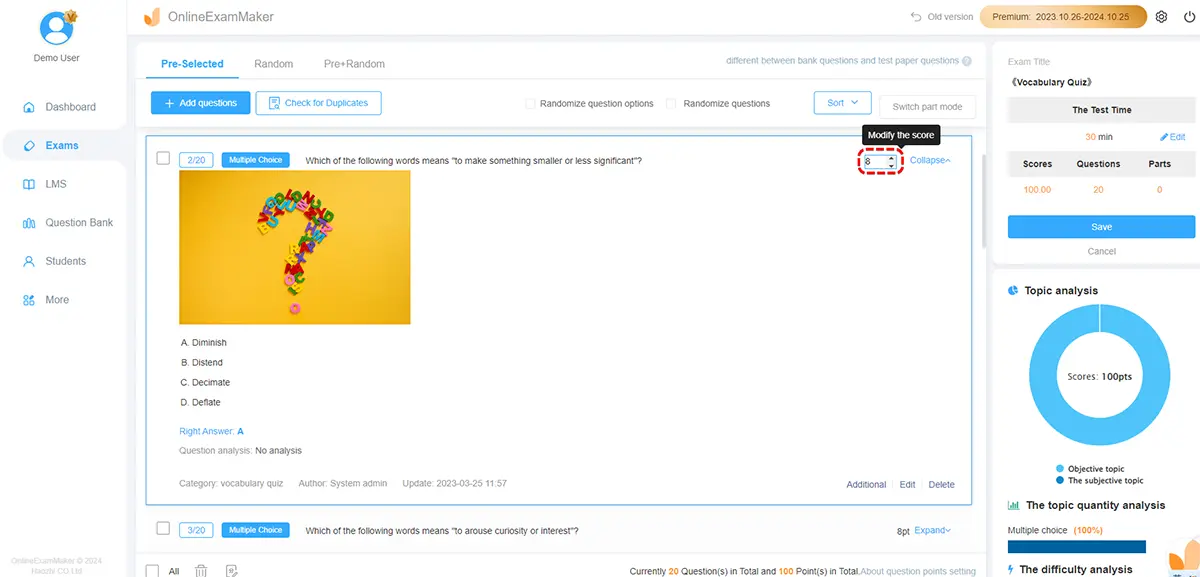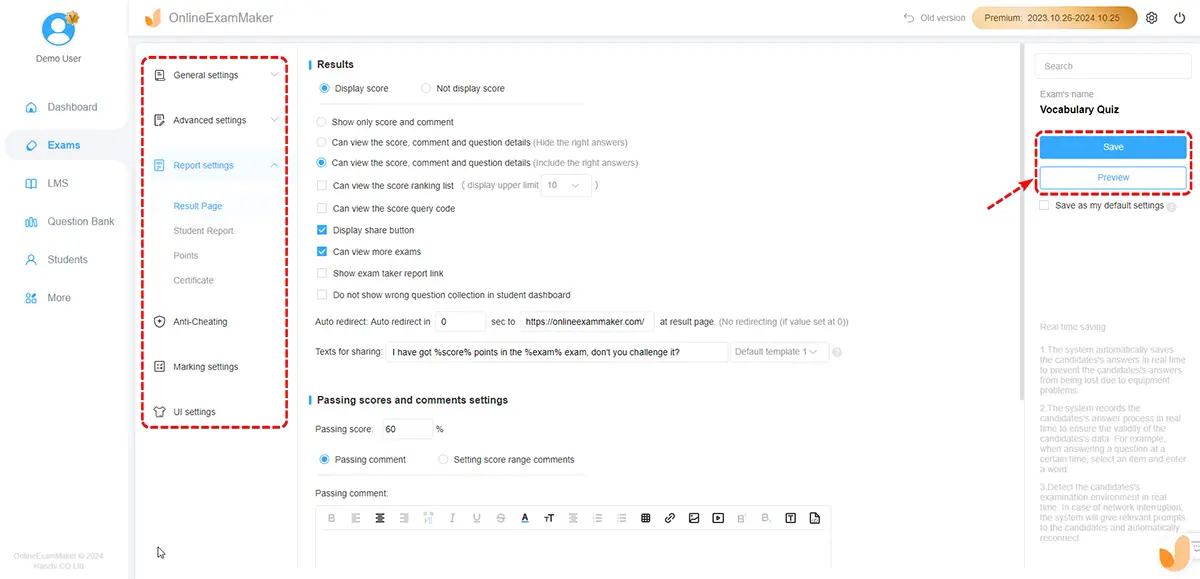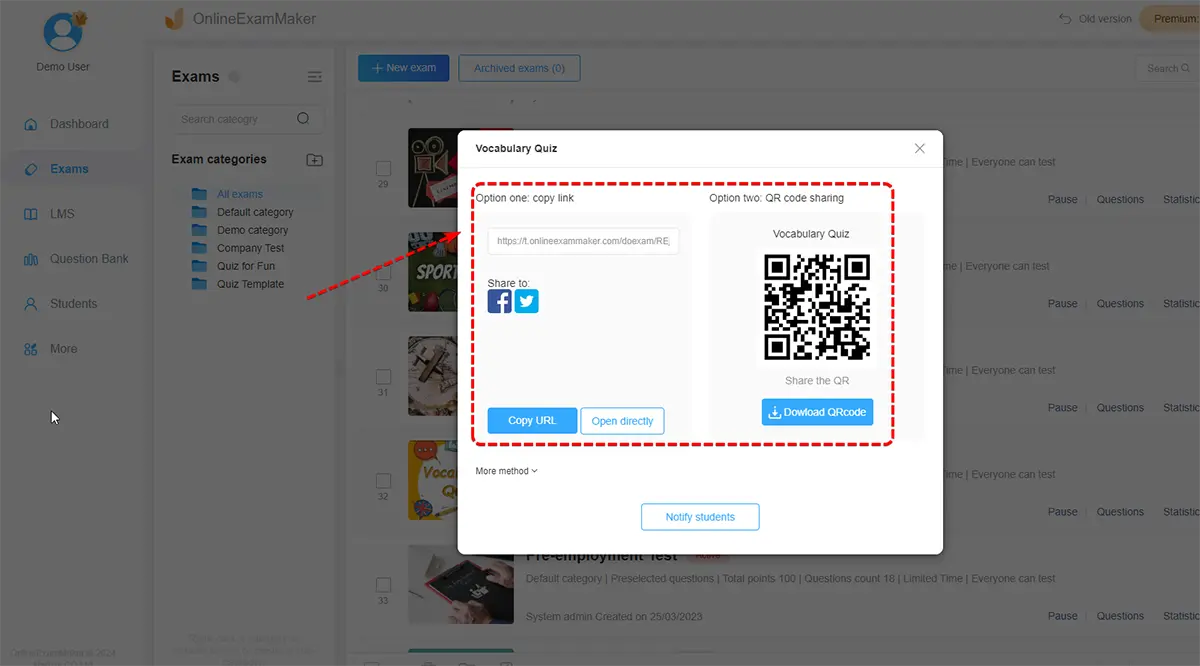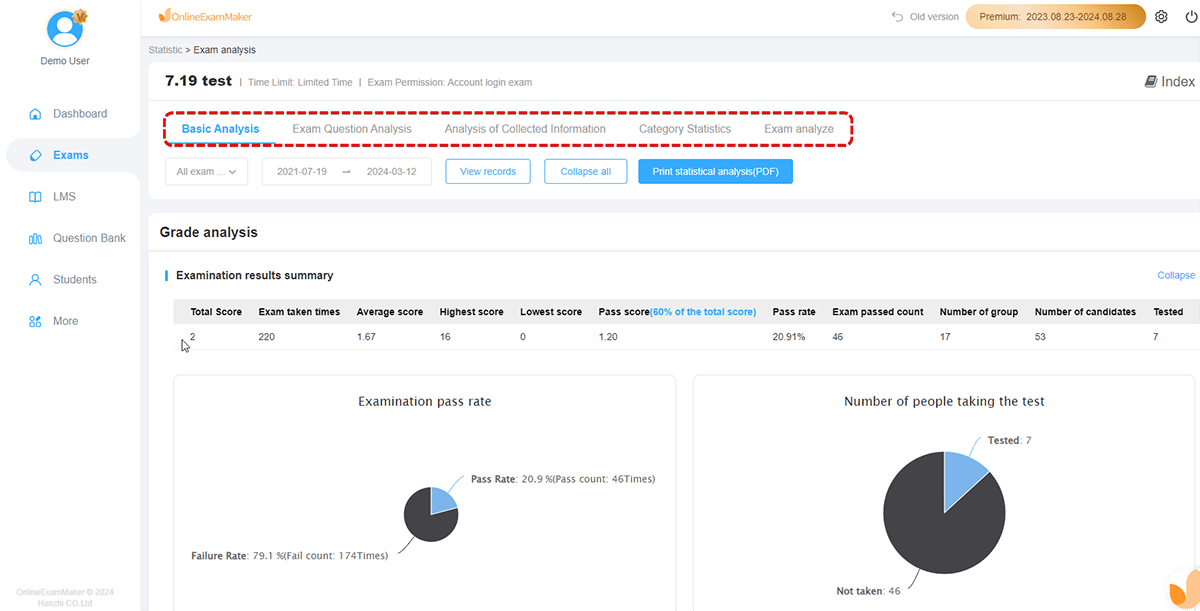Online examinations have become an integral educational system in recent years. With the increasing use of online media for studies, online tests prove to be more functional, approachable, and convenient than conventional offline tests.
If you are an educator planning to take your exam process online or a student willing to know how online exams work, here is a guide that can help..
The article will explain key points related to online exams, ranging from basic knowledge of online exams to best practices in designing assessments and the tools that could help make the process seamless. By the end, you should have a clear knowledge of how online exams can be useful for you in your academic or professional experience.
- What Is An Online Exam?
- Online Exams vs Offline Exams: What Are The Differences?
- 8 Best Practices for Online Exam Creation
- Get Started with Online Exams Using OnlineExamMaker
What Is An Online Exam?

An online exam is an assessment conducted over the Internet using digital tools or software. These tests can be taken from anywhere and are generally taken on a computer or mobile device, making them a flexible and available option for students worldwide.
Online examinations may include multiple-choice, true/false, short answer, and essay-type questions, among many other types, each of which can be created to measure a wide-ranging set of skills and knowledge. The results are automatically tabulated, many times with immediate feedback—a strong positive for both students and instructors alike.
The convenience factor is what most people are drawn to in online exams. They don’t require an individual to necessarily go out to a venue, thus, they reduce the logistical worries and costs that come with conventional exams. Online exams too require policy and a strong security system that would ensure that cheating is not possible, hence retaining the integrity of the exam. Educators use a wide range of online exam platforms and tools to create, conduct, and also grade the tests.
Online Exams vs Offline Exams: What Are The Differences?
Both online and offline exams are meant to let out the knowledge and abilities of the student, but both are different in letter and spirit in format, mode of delivery, and experience. Understanding the differences will be important to make the best application of each method when transitioning to and from an online environment.
Ease of access and flexibility
Most known difference is the issue of accessibility. For an offline exam, students have to appear at some examination center or classroom. Online exams can be conducted from anywhere, provided there is access to an internet connection. This way, students in remote or underserved locations can take exams without having to travel.
What’s more, students can take the exam at their convenience, within the instructor’s guidelines, but in general, online exams are a bit more flexible with regard to schedules.
You might like to know
Create an auto-grading quiz/assessment without any coding – try OnlineExamMaker today!
Format and tools for the exam
Offline exams are usually paper-based, requiring students to write answers by hand or fill out bubbles on a scantron sheet. Online exams can include everything from video and audio to interaction with timed question formats. Such assets allow for more dynamic testing and extending capabilities for variation in question design.
For example, the online test can include multimedia like pictures, videos, or audio and thus test hearing or the ability to analyze visual information—the experience of the examinees will be much wider.
Grading and feedback
Offline exams must be hand-graded, often very time-consuming, and possibly include a lot of human errors. E-exams can be auto-graded, and results with feedback for students’ performance, as well as for educators, are available immediately. This saves much time and helps students quickly emphasize areas where their skills need to be improved. Such automated grading reduces the administrative burden on the educator and frees up more time to teach and support the students.
Security and integrity
While offline exams rely on traditional methods of preventing cheating, such as invigilators, online exams must implement sophisticated security measures: webcam monitoring, browser lockdown features, plagiarism detection software, and randomization of questions are just a few. Since the nature of online exams is digital, students can easily be kept under surveillance remotely for their behavior with greater effectiveness against cheating compared to a traditional setting.
Environmental impact
Online tests reduce the destruction of the environment compared to offline exams since they save papers, printing, and other materials that increase waste. It may turn out to be a strong point since more schools and institutions have been planning to go green. On the other side, offline tests consume more paper and other materials that are harming the environment.
Time and resource management
However, offline exams can be quite cumbersome, with logistical work ranging from booking exam halls to hiring invigilators, down to the preparation of printed materials. These procedures are time-consuming and expensive at the same time. On the other hand, online tests are much smoother; the whole process of scheduling, taking, and grading an exam requires very little manual intervention, and therefore online platforms save time and money by reducing underlying administrative costs for institutions that could well be utilized elsewhere.
While online and offline exams each have their merits, online exams promise greater flexibility, quicker results, more innovative assessment methods, and efficient resource usage. They are also a better fit for the demands placed on modern, digital-first education, which may increasingly be focused on accessibility, environmental sustainability, and real-time feedback.
8 Best Practices for Online Exam Creation
While planning, designing strategic questions, and applying appropriate tools are required for a successful online test, here are eight best practices to make your online exam process more efficient and effective:

1. Clearly define your goals
Before designing the online test, it’s important to define what it shall seek to measure—whether knowledge retention, critical thinking, or practical application of skills. In defining clear learning outcomes, you will be guided on the type of questions you create, the exam duration, and the format.
2. Segment students for better targeting
To be sure the exam truly tests different students differently, it’s often a good strategy to segment your students for more customized exams. This may mean an advanced student takes a more challenging exam or extra time for students with learning disabilities. On some internet-based exam platforms, you can establish special settings according to the profile of the student, and this may add to the fairness of the assessment.
3. Create a range of question types
Mix and match question types to create an interesting exam, which tests several levels of knowledge. While multiple-choice type questions are great to administer for quick assessments, consider essay-type questions, short answer questions, or even practical tasks that require application. In this way, you make sure you test a broader range of skills.
4. Use randomization to derail cheating
One of the biggest concerns with online exams is the possibility of students cheating. Randomizing the order of the questions and answer choices, and even question types, can minimize students’ sharing of answers and reduce cheating. With a few clicks, many online exam tools will randomize questions.
5. Advance testing for technical issues
Run mock exams before the test day to identify glitches. The compatibility of browsers, internet speed requirements, and interaction question types should also be tested to reduce friction on the actual exam day.
6. Time your exam effectively
Although online exams can be taken at any time, timing is still important. Please set reasonable times that reflect the difficulty level of the exam so as to test the students fairly. Avoid short times that may make students stressed needlessly, but do not make it so long that they might lose focus.
7. Give clear directions
Make your instructions clear and easy to understand. Explain clearly how to proceed with the exam, what behavior is required, and the time available for the test. The less confusion, the better, and clear communication is an important part of a good exam experience.
8. Achievement certificates
For exams part of a certification program or professional development course, providing a certificate of completion is often a strong motivator. Fortunately, many online exam platforms can automatically print customized certificates with the name of the student and details of the exam.
Keep these best practices in mind, and your online exams will be effective, secure, and fair to participants.
Get Started with Online Exams Using OnlineExamMaker
There is no need for you to be utterly confused while starting your online exam initiative. In fact, with the tools available today, such as OnlineExamMaker, educators and institutions can easily create and then conduct exams. You grant easy access, customization of exam formats, and detailed analytics to monitor the performance of your students. The following is how you get started with the OnlineExamMaker.
Step 1: Sign up and setup
Create Your Next Quiz/Exam with OnlineExamMaker
First of all, one needs to sign up on the OnlineExamMaker website. After logging in, one can create or choose from existing templates to create his/her exams. It is quite easy to set up questions, add multimedia elements, and organize your exam the way you want within its user-friendly interface.
Step 2: Exam content creation

With the OnlineExamMaker, one can make use of a variety of question types. A user will enjoy several question types, like multiple-choice questions, true/false questions, short answers, and essay questions, among others. In addition to that, you can attach multimedia-like videos or images to your questions. Changes and personalization according to your particular exam goals can be done very easily.
Step 3: Define the exam settings

You can set the settings to your liking: timing, randomization of questions, and the choice for which student responds. The platform allows for adaptive question settings, meaning that different students can have different sets of questions, adding to the integrity of the exam.
Step 4: Publication and sharing

Once the quiz is done, it can be shared privately with a candidate group or spread publicly on every social media via the link or QR code.
Step 5: Analyze exam results

OnlineExamMaker provides detailed analytics on student performance once the exam is taken. It helps to show how well each student has performed, identifies areas where there may be problems with students, and suggests what needs to be done to change your teaching or future exams. The system also allows you to issue certificates for those who pass the exam. OnlineExamMaker ensures that creating and administering online exams is easy, efficient, and secure. It comes with tons of features and customization options, making it ideal for educators and organizations implementing online assessments.
Conclusion
The transition to online tests from offline, although daunting for some, can be very smooth, convenient, and advantageous to both educators and students alike if approached correctly with the help of proper tools. Online exams make the assessment more dynamic and accessible through the use of flexibility and ease aided by various tools. Be it knowledge assessment with traditional question formats or integration of more interactive and multimedia elements, the options are limitless.
However, the success of any online examination requires careful planning and attention to detail. You can achieve an effective online exam experience by setting clear goals, creating a variety of question types, ensuring accessibility for all students, and using secure platforms. Such best practices as item randomization, clear directions, and proper technical support further enhance the reliability and fairness of online assessments.
Choosing the right tools to simplify exam creation and management is important. An OnlineExamMaker-type platform, available online, offers an all-in-one solution for creating, securing, and analyzing your online exams. From customizable features to built-in security measures and detailed analytics, a platform can make life easy and enhance the experience of an exam completely.
With education now moving well into the future, online exams are very much likely to remain central to how we conceive of the assessment of knowledge. Embracing this technology, coupled with the best practices laid out here, will let you make the online exam work for you. It offers an efficient, effective method of assessment that fosters value for both students and instructors alike.
OnlineExamMaker
Create Your Next Quiz/Exam with OnlineExamMaker
If you want to simplify how online exams are created and delivered, then OnlineExamMaker is the answer. Within this platform, you will find an intuitive interface for designing, deploying, and grading any exam from anywhere in the world. Be it an educator, a corporate trainer, or any organization, OnlineExamMaker puts at your disposal all the tools that encompass secure, appealing, and effective assessments.
With OnlineExamMaker, your exams are flexible and reliable, not only because of the variety of question types but also due to the adjustable settings of the exams and advanced security features like browser lockdown and video proctoring. Besides, it offers actual deep analytics that you will be capable of capitalizing on to form meaningful interpretations about student performance to keep progress easier to track and identify further areas for improvement. Start using OnlineExamMaker today to learn what true efficiency and seamless online assessments feel like. Sign up now to utilize all the mighty features that this platform offers to tailor the best exam according to your requirements.